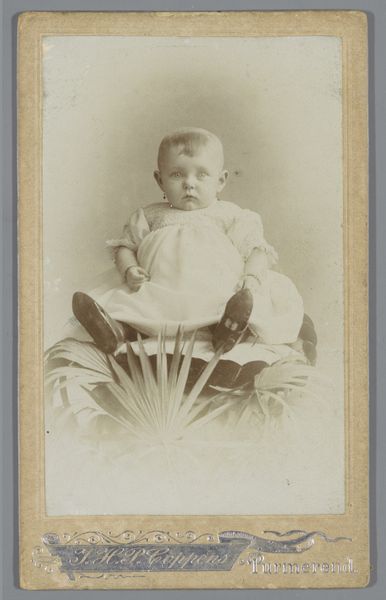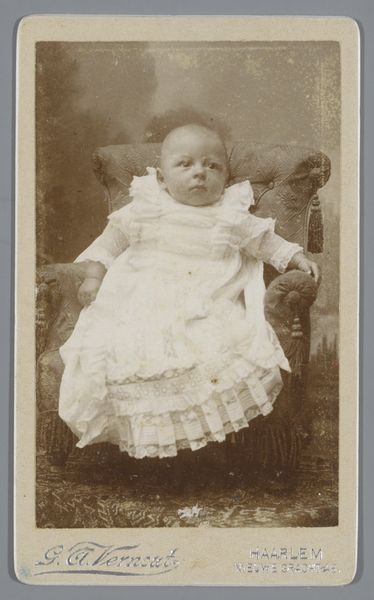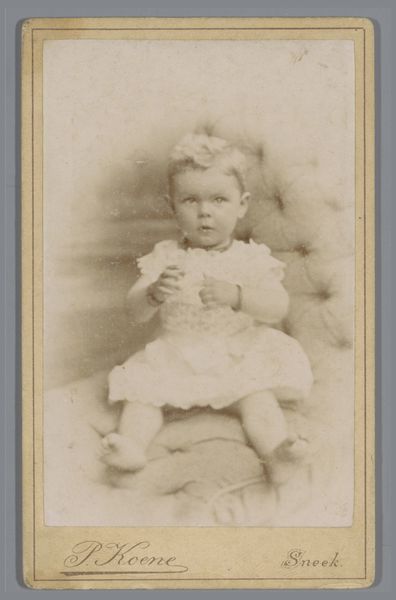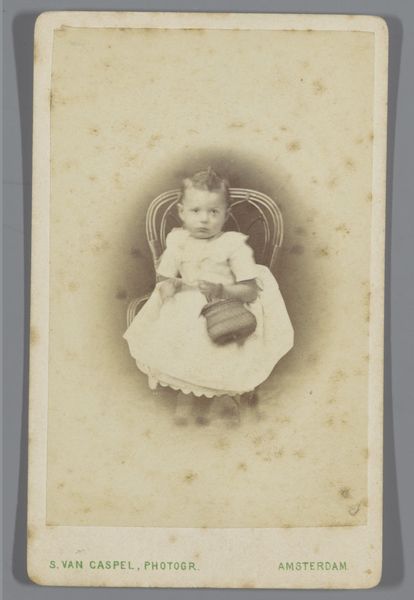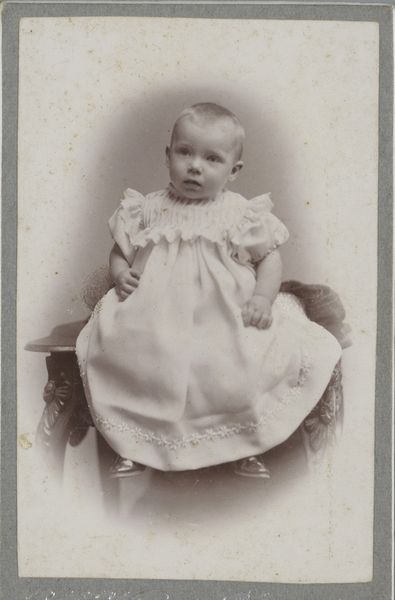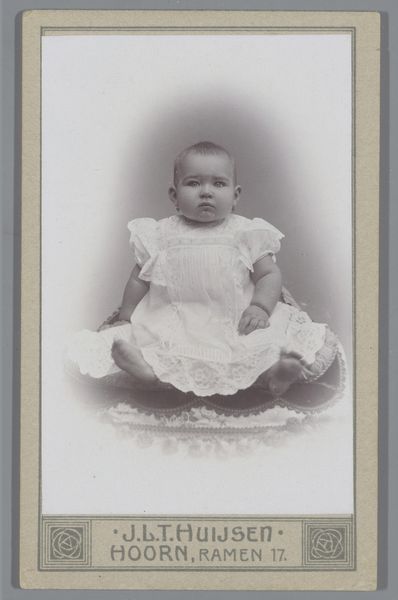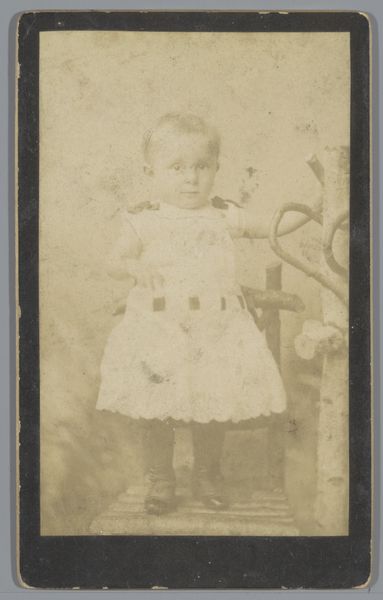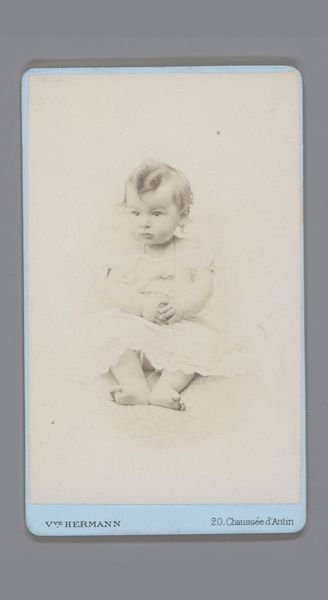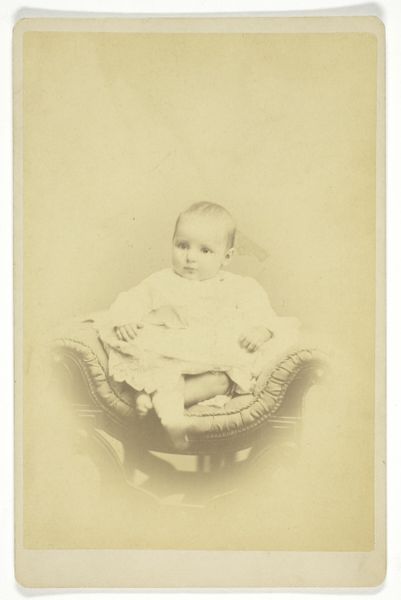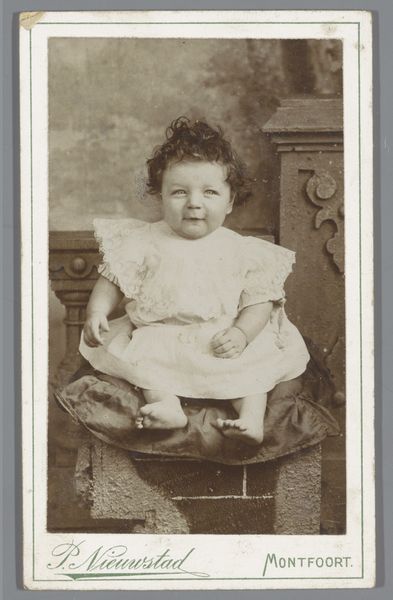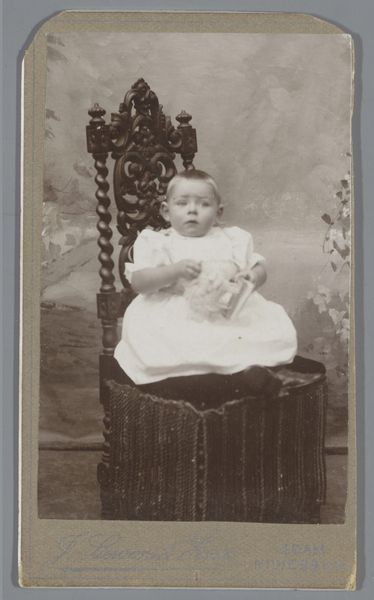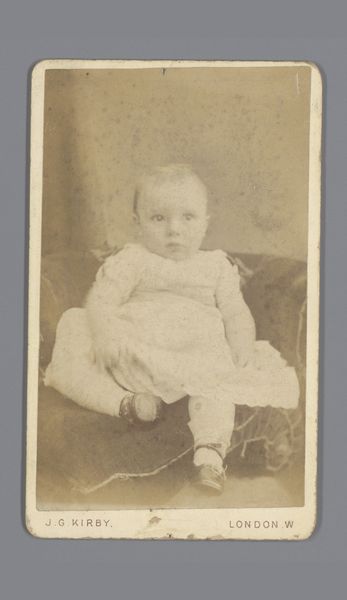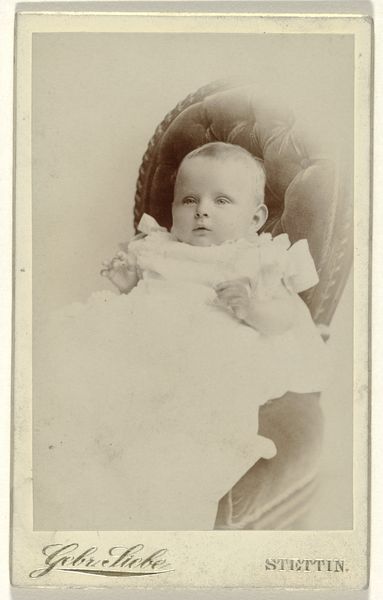
photography, gelatin-silver-print
#
portrait
#
self-portrait
#
photography
#
gelatin-silver-print
Dimensions: height 105 mm, width 64 mm
Copyright: Rijks Museum: Open Domain
Editor: We're looking at a gelatin silver print titled "Portrait of an Unknown Baby," taken sometime between 1891 and 1912, by Friedrich Carel Hisgen. The image is, well, very antique! I’m curious about the aesthetic choices in presenting this young child. How would you interpret this work from a formal perspective? Curator: The tonal range within the gelatin silver print commands immediate attention. The near monochromatic palette directs focus towards subtle variations in light and shadow, sculpting the baby's form and the surrounding fabric. Note the considered composition: the central placement of the subject creates an immediate, stable structure, with the texture of the material and the detail in the face suggesting the use of semiotics for this artwork. Editor: Semiotics, as in, symbols and signs? Are you suggesting that everything, from the fabric to the baby's gaze, carries a specific intended meaning? Curator: Precisely. The photographer deliberately constructs the image through careful management of elements within the frame. It's not solely a literal representation, but an arranged system of visual signifiers: The choice of fabric and the formal attire contribute to a visual narrative. And what do you see when you view it? Editor: Well, I initially saw it just as a quaint photograph, but considering what you've shared, it's so much more about the contrast, texture and deliberate placement, it provides a more comprehensive appreciation of Hisgen's mastery in constructing a formal portrait. Curator: Indeed, through focused analysis of such works, we move beyond surface appearances, towards grasping deeper understandings and unlocking meaningful dialogue, through visual analysis.
Comments
No comments
Be the first to comment and join the conversation on the ultimate creative platform.

